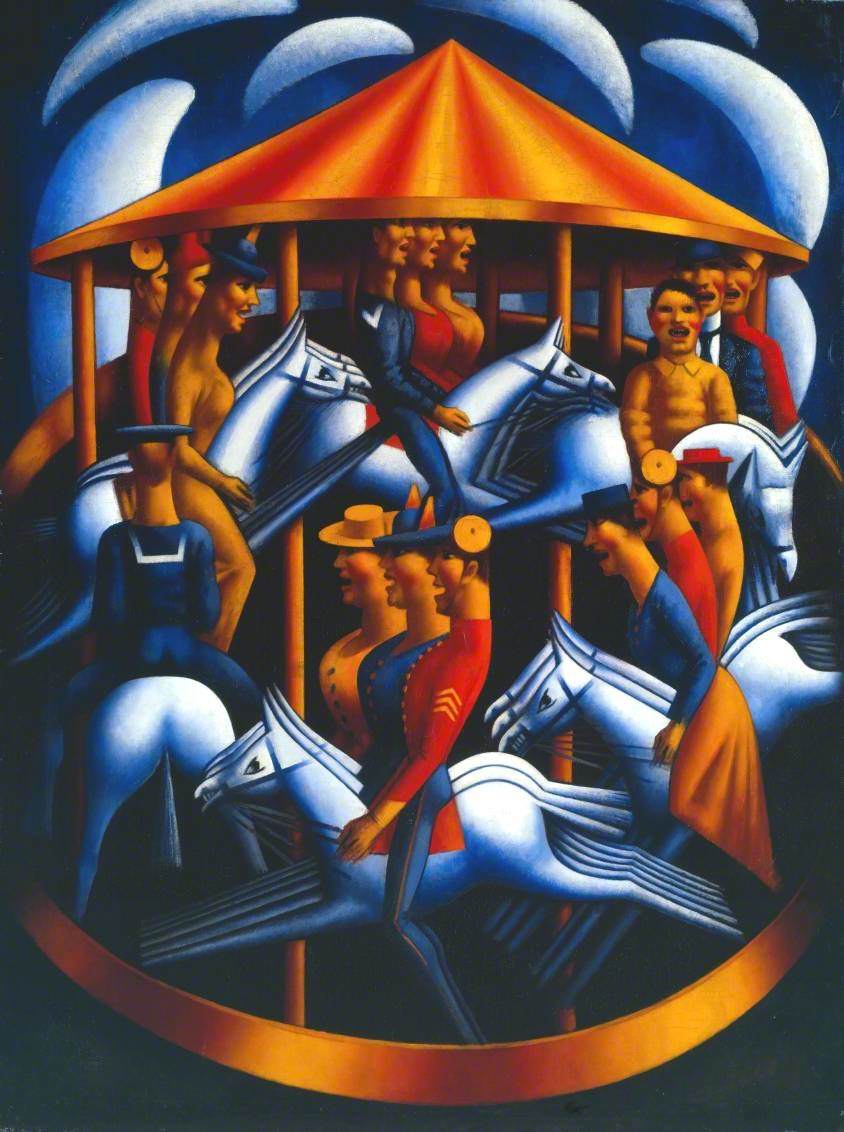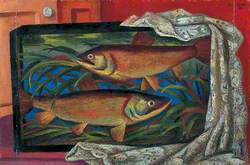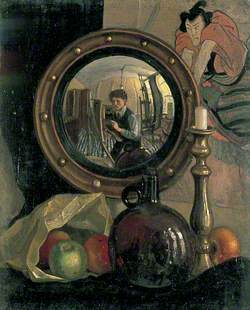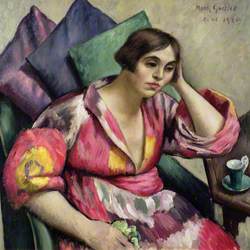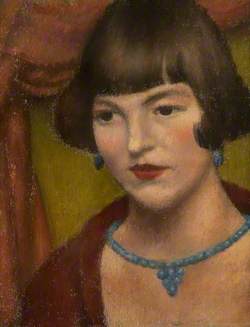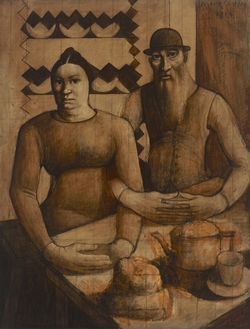How you can use this image
This image is available to be shared and re-used under the terms of the Creative Commons Attribution-NonCommercial-NoDerivatives licence (CC BY-NC-ND).
You can reproduce this image for non-commercial purposes and you are not able to change or modify it in any way.
Wherever you reproduce the image you must attribute the original creators (acknowledge the original artist(s) and the person/organisation that took the photograph of the work) and any other rights holders.
Review our guidance pages which explain how you can reuse images, how to credit an image and how to find more images in the public domain or with a Creative Commons licence available.
DownloadNotes
Add or edit a note on this artwork that only you can see. You can find notes again by going to the ‘Notes’ section of your account.
Gertler lived near Hampstead Heath from the winter of 1914–1915. The roundabout at the annual fair may have provided an inspiration for this picture. His painting from the spring of 1915 titled 'Swing Boats' (now lost, reproduced Woodeson, pl.28) is probably also of this fair. A letter from the writer D. H. Lawrence to Zoe Akins of 15 September 1915 describes a special fair then on the Heath (Zytaruk and Boulton, eds., 'The Letters of D. H. Lawrence', II, Cambridge 1981, p.396): 'There is a fair on behalf of the wounded soldiers today, and myriads of the wounded, in their bright blue uniforms and red scarves, and bands, and swing boats, and a whole rowdy enjoyment. It is queer.' Both the colours, and his remarking the odd contrast between wounded soldiers and public enjoyment, connect this comment with his friend Gertler's painting.
The Tate's painting was begun by May 1916 when Gertler wrote to Lytton Strachey, 'I am working very hard on a large and very unsaleable picture of "Merry-Go-Round"' (Carrington, p.111). Gertler's biographer John Woodeson states that it was finished by the following autumn. Several of the figures in the painting wear uniform but, although it is understood today as an expression of horror at the war, this is surprisingly not made explicit in either private or public comments of the time. Lawrence was deeply affected by the painting but, although recognising Gertler's anguish, related it to the artist's Jewish roots rather than to the war. In a letter to Gertler of 9 October 1916, Lawrence writes: 'Your terrible and dreadful picture has just come. This is the first picture you have ever painted: it is the best modern picture I have seen ... I believe there was something in Pompeian art, of this terrible and soul-tearing obscenity ... I could sit down and howl beneath it like Kot's dog, in soul-lacerating despair. I realise how superficial your human relationships must be, what a violent maelstrom of destruction and horror your inner soul must be ... it would take a Jew to paint this picture. It would need your national history to get you here, without disintegrating you first ... You are twenty-five, and have painted this picture – I tell you, it takes three thousand years to get where this picture is – and we Christians haven't got two thousand years behind us yet. (Zytaruk and Boulton, eds., II, 1981, pp.660-1)
Gertler had written to his patron Edward Marsh in the preceding summer: 'I am I believe what you call a "passivist". I don't know exactly what that means, but I just hate the war' (in C. Hassall, Edward Marsh, London 1959, p.370). It is difficult now not to regard the 'Merry-Go-Round' as an expression of this hatred but the numerous reviews of the 1917 London Group exhibition – by which time the news of the war was even worse – make no reference to this idea. It was regarded as the most striking painting in the exhibition but even the favourable descriptions did not take it to be a serious work. The painting was regarded in the first place as a provocative example of modernity in art and secondly as a decoration, intending no more than a description of a fun fair. The Sunday Times (29 April 1917) called it 'the apotheosis of the steam organ in paint, and a style of decoration admirably fitted for the adornment of a popular restaurant'.
Further reading: Noel Carrington (ed.), 'Mark Gertler, Selected Letters', London 1965, pp.11, 111–112, 128-33, 138, pl.10 John Woodeson, 'Mark Gertler, Biography of a Painter', London 1971, pp.207–247, 250, 339, 341, 343–345, reproduced pl.26 'The Tate Gallery 1984–1986: Illustrated Catalogue of Acquisitions', London 1988, p.153–155, reproduced Terry Riggs February 1998
Title
Merry-Go-Round
Date
1916
Medium
Oil on canvas
Measurements
H 189.2 x W 142.2 cm
Accession number
T03846
Acquisition method
Purchased 1984
Work type
Painting
Inscription description
date inscribed
Stories
-
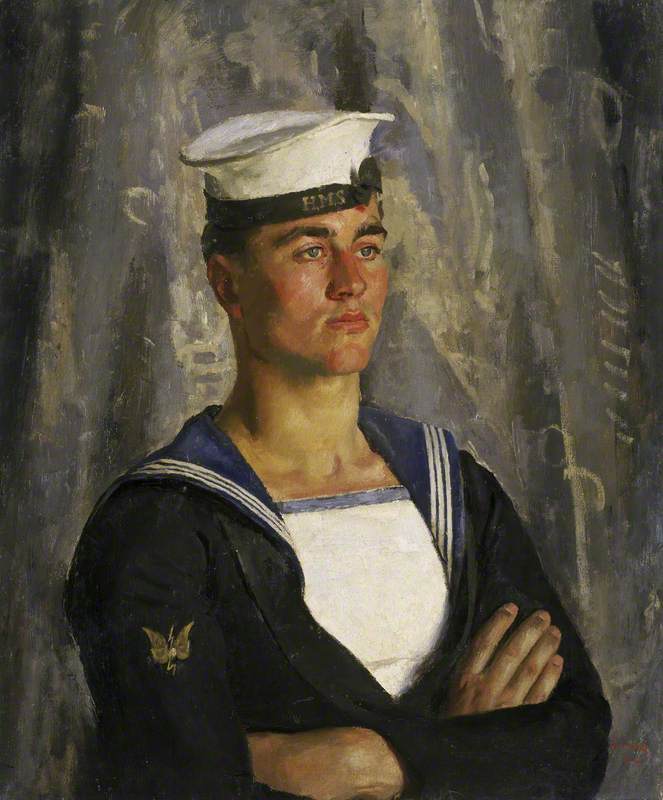 Queer bodies: the sailor in art
Queer bodies: the sailor in artJon Sleigh
-
 Harold Knight: uncovering Britain's pacifist portraitist
Harold Knight: uncovering Britain's pacifist portraitistRuth Millington
-
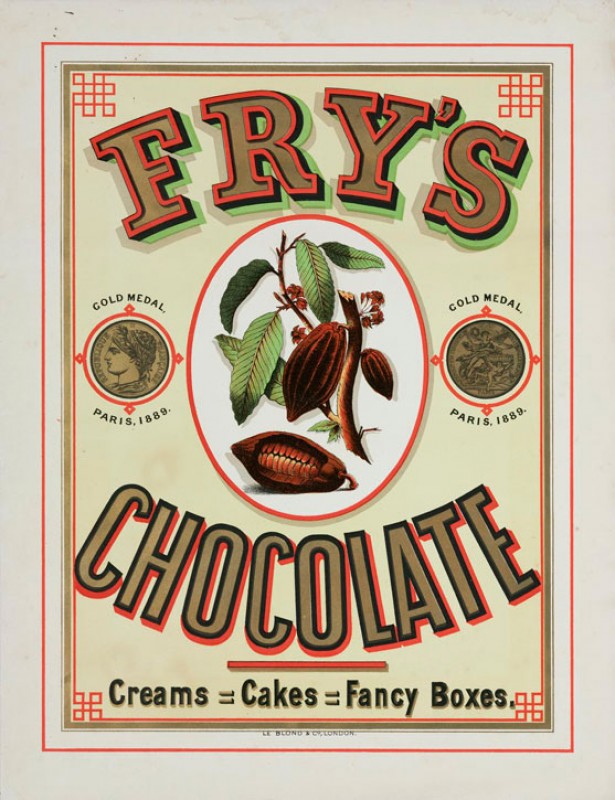
-
 The genius of the place: Mark Gertler
The genius of the place: Mark GertlerSara Ayad
-

